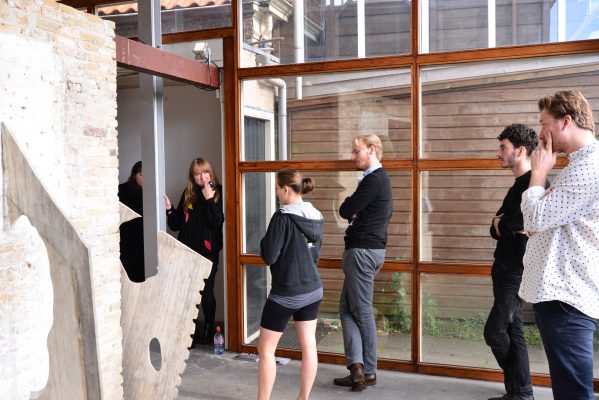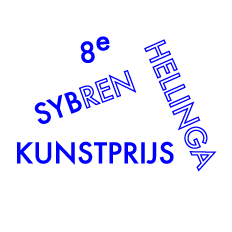17 October 2016
Interview with the jury
Alix de Massiac

The six-member programme committee of Kunsthuis SYB selected 26 artists from 179 submissions. This committee, responsible for all programming at Kunsthuis SYB, consists of artists, curators and critics. And through their daily involvement they guarantee quality at Kunsthuis SYB, which offers residencies to artists with a powerfully inquisitive mind who are open to experimentation. The programming committee aims for a unique, well-balanced composition by drawing members with divergent views and backgrounds.
Since the start of the Sybren Hellinga Art Prize, Kunsthuis SYB’s exposure and relevance in the so-called humus layer have increased. Besides offering many young artists with a physical space and the financial means to develop new art works through residencies, the jury would like to emphasise the strategic timing of the art prize. As opposed to most other prizes focusing on more established artists, the Sybren Hellinga Art Prize targets artists who are establishing themselves, giving them the right energy boost and vote of confidence at the start of their career. The exhibition also provides a good opportunity for the short-listed artists to relate to their work, each other and the art world. Besides reflection there is also room to distinguish and highlight the contours of the context and the positions the artists wish to take within that context.
The prize itself cannot make any longterm guarantees in this uncertain field, but it does provide incentive and confirmation for the emerging artist. Together with the other nominees, the winner enjoys extra exposure and a modest yet significant financial encouragement to continue. Previous nominees include Yael Bartana, Maze de Boer, Gwenneth Boelens and Laurence Aëgerter, now all well-established names in the Dutch art scene. The same goes for previous winners, including Paulien Oltheten, Lotje van Lieshout and Riet Wijnen – who, as most recent winner, takes a seat in this year’s jury.
Early September, jury members Riet Wijnen, Jaring Dürst Britt and Bianca Stigter gathered to select five nominees for the shortlist. The nominees are Halla Einarsdóttir, Milena Naef, Eric Peter, Machteld Rullens and Sanne Vaassen. “We quickly concluded that the selected artists create autonomous works and are no epigones,” Dürst Britt tells us. “They each and individually define their own preferences and topics.” Bianca Stigter adds: “we saw many candidates that showed real potential, but their work wasn’t sufficiently documented, or needed too much background information to make a strong impression.” “At the same time,” Dürst Britt proceeds, “you also find work that is strongly situated in the “Contemporary Art Daily” sphere.” “And what won us over in the end, ” Riet Wijnen continues, “was not one single piece. What is more important is a lasting impression that summons its own universe.”
Regarding the differences in age and experience between the candidates on the longlist: the jury originally held off on candidates that were too young, afraid of selecting artists that haven’t produced enough work yet to give a sound impression. Though it soon became clear that this was irrelevant due to the maturity of the presented work, according to Dürst Britt. “Some of the shortlist candidates have only recently graduated, but you wouldn’t be able to tell looking at their work.”
The jury reached a consensus on the selection quickly and unanimously. Stigter: “It’s reassuring that we were all, independently, enthusiastic about the work of the artists on the shortlist. Clearly, certain qualities emerged that all three of us recognised, despite, or perhaps even thanks to, our different backgrounds.” Moreover, the jury did not value a well-balanced shortlist with regard to sex, age or medium. After all, artists have no influence on the preferences and choices of their colleagues, and any potential similarities do not diminish the quality of a practice in any regard. Wijnen explains: “we did question whether or not we should aim for a balanced selection, and whether it was wise to select the same topics and artistic principles more than once within one shortlist. But in the end we chose quality. After all, the shortlist is all about the individual candidates, who we believe are serious contesters for the Sybren Hellinga Art Prize and who are able to build a great exhibition.”
The power of the nominees lies in their ability to create a convincing universe that already shows early signs of a coherent oeuvre. “I think political engagement and poetry are the two key notions of this shortlist,” says Dürst Britt. Wijnen adds: “and you can also see a strong emphasis on the aesthetics of the work: the physical material. You can see the conscious application of this weaved into the practice of each artist.”
The jury is thrilled about the shortlist and is looks forward to award the Sybren Hellinga Art Prize on 29 October 2016.
